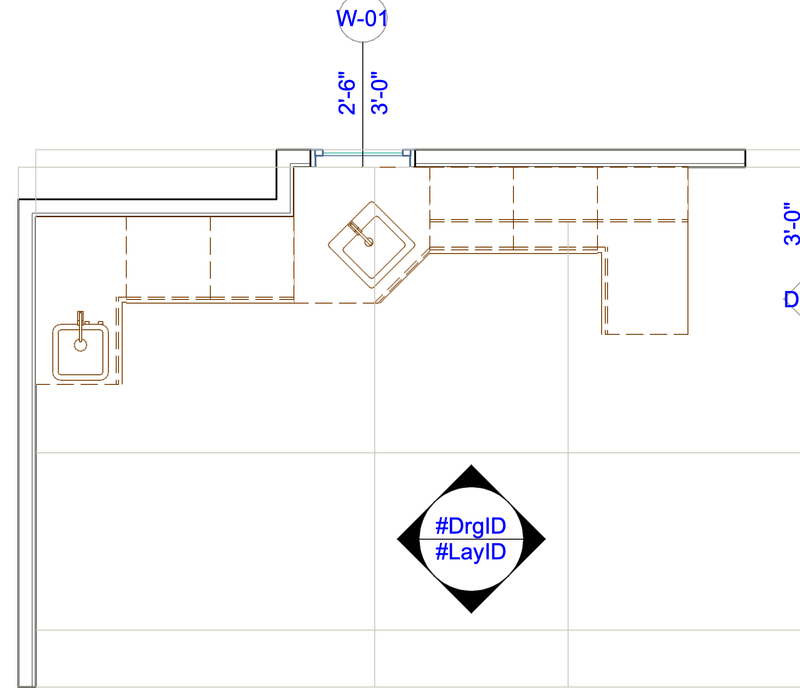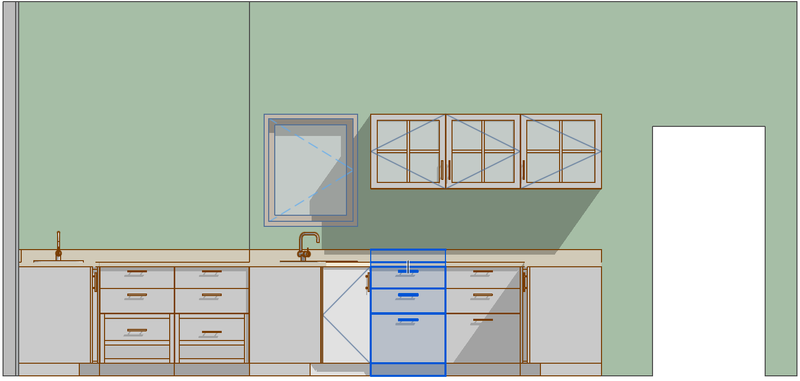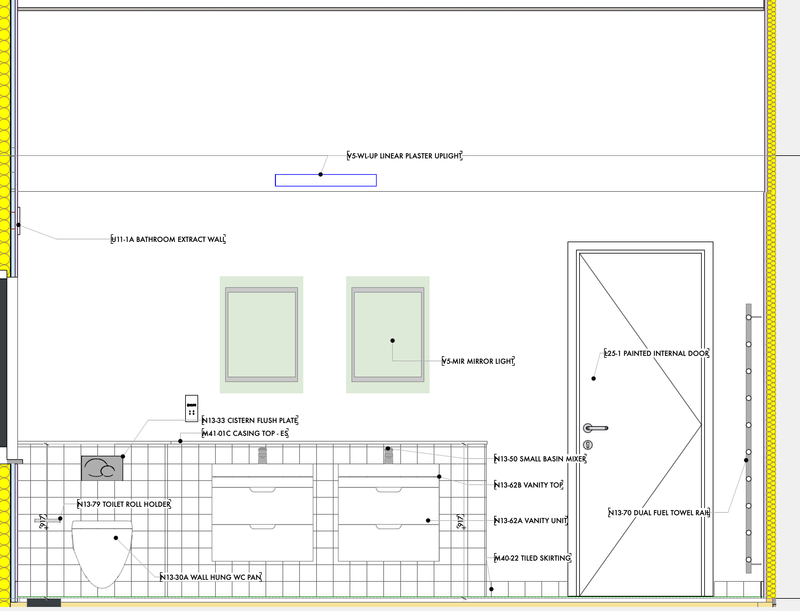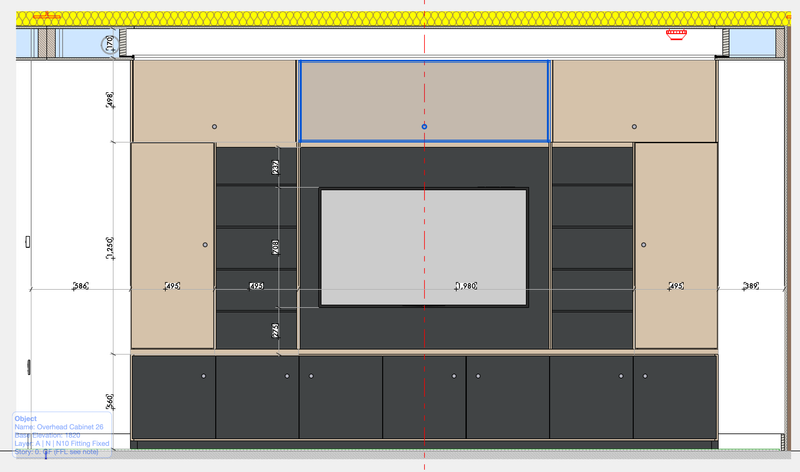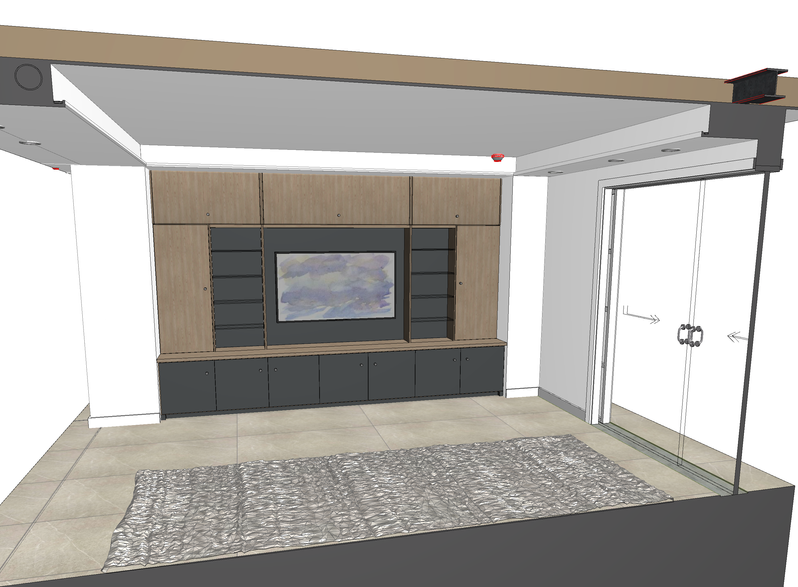- Graphisoft Community (INT)
- :
- Forum
- :
- Documentation
- :
- Interior elevations , please share your best work ...
- Subscribe to RSS Feed
- Mark Topic as New
- Mark Topic as Read
- Pin this post for me
- Bookmark
- Subscribe to Topic
- Mute
- Printer Friendly Page
Interior elevations , please share your best work if you can
- Mark as New
- Bookmark
- Subscribe
- Mute
- Subscribe to RSS Feed
- Permalink
- Report Inappropriate Content
2023-12-27
05:39 PM
- last edited on
2023-12-30
05:09 PM
by
Laszlo Nagy
hi!
you will be probably laughing the way i do elevations (more like autocad drawings with all rooms next to each other where I can quickly review/edit/annotate) but I am sincerely looking for help in case learning it in archicad would make it even faster.
I finally feel more comfortable in using archicad in general so I thought it may be beneficial to finally lean into doing elevations the archicad way the long-term game. The main reason why I am looking to change this is so I don’t have to go from updating elevations to updating floor plan if anything changes and it all seamlessly work together & that I don't have to create wall by wall by drawings but I do enjoy drawings everything inside the walls than the 3d Because:
1. Drawings seemed much faster than if I would model everything in archicad (I mean hours/days faster). I am the principal in company so time is really crucial, I don’t clearly have all days sitting at modeling details. Also the steps from editing elevations, to adding it into layout and adding annotations while seeing all elevations next to each other on the screen seems less time consuming. The following points are basically regarding time management and modeling since 2. Many of the cabinetry in archicad don't have the options/settings of cabinetry and plumbing I needed in modern world of luxury interiors. Example integrated slab sink with 60 degrees angle & detail of it… or certain fireplaces we use that didn't have 3D models online now I have to model them because there are limited options in library, and such and such ... I just can't even imagine that someone would model all these details it must take so much time no? 3. many of the surfaces I have to create again myself, the library is very limited and there is not even a place where to download it from somewhere else... (right?)
Clearly - I know I must be doing this all wrong but I am ready for another learning curve I am ready for. if it's worth it and if at the end save me time. (is that even possible?)
Please if you can , can you share here your best interior elevations that include notes/details/cabinetry details and such, so I can see the maximized potential and encourage myself going this direction. Could you also share if you model often?(if some cabinetry setting is missing, how do you go around it and is it PITA or easy?
thank you so much
Archicad Solo 26 and 27 (in testing mode)
- Labels:
-
Elevations
- Mark as New
- Bookmark
- Subscribe
- Mute
- Subscribe to RSS Feed
- Permalink
- Report Inappropriate Content
2023-12-27 07:47 PM
You can get exactly the same in archicad, but You only see it the way you present it until you arrange it in the layouts.
But then You dont edit in the layouts, but within each individual drawing.
- Mark as New
- Bookmark
- Subscribe
- Mute
- Subscribe to RSS Feed
- Permalink
- Report Inappropriate Content
2023-12-29
09:53 AM
- last edited on
2023-12-30
06:07 PM
by
Laszlo Nagy
If I understand correctly, you are exploring the 'value proposition' of changing from static 2D toward the dynamic of BIM, especially for more level-of-detail (LOD) such as cabinets, fireplaces, etc. production beyond overall building modeling.
A few business level thoughts:
As with your design process (and CAD work), the maturation of your BIM work builds over time. Each study and project adds to your digital library and enhances your modeling standards, structures, and detailed components. You become more fluid in this design medium. In this regard, it's fairly important to be organized, document your standards as you go, and learn of additional resources. To be time-effective, you may also choose to take the design to a particular LOD, then delegate to others for greater LOD. For example, in a project I am working on, I am schematically modeling the kitchen cabinetry for general size and function; then will have a manufacturer provide a full set of production/shop drawings to mark up for fabrication. On the other hand, I made some more detailed modeling of a fireplace. I did this because I wanted to provide a general framework for adjacent structural engineering work and ensure I maintained feasible routes for various utilities around the fireplace and structure before taking it to a contractor. I believe my two day long efforts with just these couple of items probably cost avoided a few thousand dollars of consultant and possibly in-field contractor time.
A few thoughts on the technical level:
There is nothing wrong with keeping on hand your static 2D drawings of standard cabinet (or other design) types and details you want to maintain design control over. They can be on a detail sheet and referred to from the dynamic model (as long as reasonably represented in the model). As with my kitchen example above, the conceptual cabinets in the model with a few reference call-outs will eventually be returned as shop drawings for my review and sign-off.
As to resources, the AC27 library cabinets are actually fairly customizable. As an example of some of the AC27 capability, I spent about 45 minutes assembling some cabinets in fresh AC27 PLN (attached snips), wherein I customized a couple of sinks, and modified countertops and front panels. You may notice there are many more settings in AC27 cabinets than there were a few years ago (including sink rotation and offsets). I also included a separate (left-most) sink that I SEOed into the cabinet just to relate another technique. As to how they will look, I suggest experimenting. (The elevation shadows and effects can be adjusted in the Elevation Settings.)
As to resources beyond the AC library, there are third-party sites for custom objects, as well as direct object downloads from some manufacturers. However, I've found so far, at least in my work, these are rarely worth my time. Even with the RVT converter (since most US objects are for that platform), they come in static (not parametric), too big (poly count), or too rough (if I cut the poly count). With specialty equipment in particular, I've started making my own objects, which are parametric and a fraction of the size. Once they are in my office library, they are good to go when I need them.
For surfaces, if it isn't in AC or the additional AC surface catalog, I often use a site like textures.com (there are several others, too, I believe), or upload my own pictures or those captured from manufacturers websites. These pics can be uploaded and assigned to a surface and applied accordingly.
AC28 USA on 16” 2019 MBP (2.4GHz i9 8-Core, 32GB DDR4, AMD Radeon Pro 5500M 8G GDDR5, 500GB SSD, T3s, Trackpad use) running Tahoe OS + extended w/ (2) 32" ASUS ProArt PAU32C (4K) Monitors
- Mark as New
- Bookmark
- Subscribe
- Mute
- Subscribe to RSS Feed
- Permalink
- Report Inappropriate Content
2023-12-29
12:09 PM
- last edited on
2023-12-30
06:10 PM
by
Laszlo Nagy
Firstly I would encourage you to use the full scope of Archiocad to help you, particularly to save time in a small practice. I am sure you will also enjoy the process!
How detailed you draw things is a business decision based upon how much you need to show to get the design right and what you are being paid for. Sometimes a placeholder object will do, sometimes you can find an existing model from somewhere like 3D warehouse or a manufacturer, sometimes you just need to draw it yourself. Whatever you do, save it for future use to build up your own library.
Surfaces are a constant problem. The ones in the library are limited and generally not great for interiors. It's rare to find a tileable image from a manufacturer, but sometimes they are available. Often you just have to make your own from image files.
I have added a few files to hopefully inspire you:
- Interior 1 - classic bathroom elevation using the interior elevation tool. Note the inclusion of autotext specification notes which is crucial to the way I work
- Interior 2 - interior elevation of a media wall
- Interior 3 - 3D document of the same media wall. The resolution of a 3D doc is better than using an image file and you can add notes too
- Interior 4 - Typical layout for a bar fitting area
- Interior 5 - photo of the finished job
AC26, iMac
User since V5
- Interior wizard and accesories doesn't work. in Installation & update
- Stuck at 4 | Calculating Split Polygons in opening an Elevation in Modeling
- Interior Elevations Wish: place on Active Story in Documentation
- My Settings are Locked in Modeling
- Elevation Markers disappear when line is jogged in Documentation

